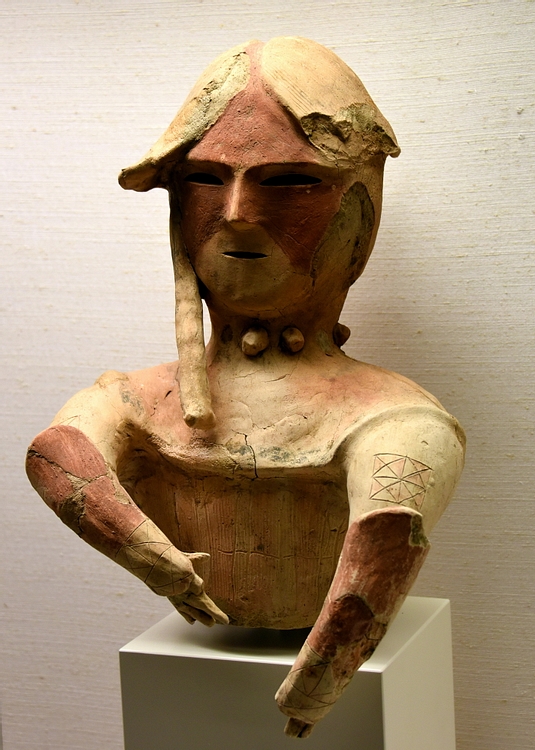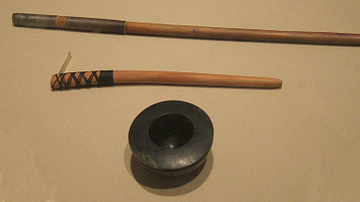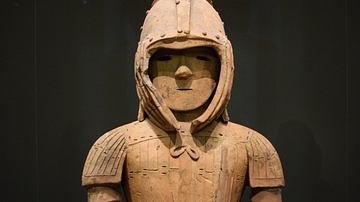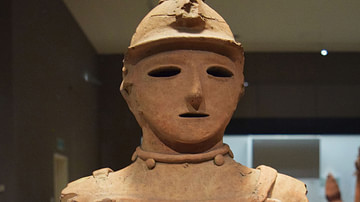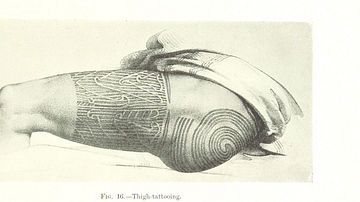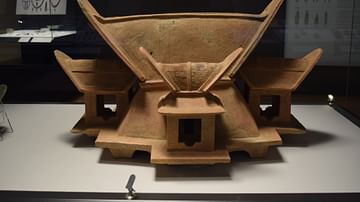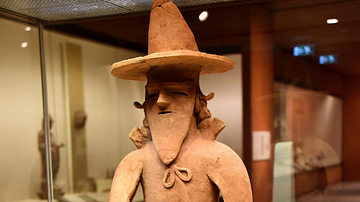Server Costs Fundraiser 2024
Illustration
This is the top half of what was originally a complete figure. The warrior's face is partly painted red, he wears his hair in plaits (one is missing), and the protective gauntlet on his forearms may be part of an armour suit. From the 400s CE military equipment and display became increasingly important in Japanese society. This is reflected by the haniwa, which began to predict warriors, quivers with arrows, and swords in sheaths. Terracotta, earthenware, handmade technique. Said to be from Mito city, Ibaraki prefecture, Japan, c. 500s CE. (The British Museum, London).
About the Author
Cite This Work
APA Style
Amin, O. S. M. (2018, December 12). Haniwa Warrior with a Tattoo. World History Encyclopedia. Retrieved from https://www.worldhistory.org/image/9522/haniwa-warrior-with-a-tattoo/
Chicago Style
Amin, Osama Shukir Muhammed. "Haniwa Warrior with a Tattoo." World History Encyclopedia. Last modified December 12, 2018. https://www.worldhistory.org/image/9522/haniwa-warrior-with-a-tattoo/.
MLA Style
Amin, Osama Shukir Muhammed. "Haniwa Warrior with a Tattoo." World History Encyclopedia. World History Encyclopedia, 12 Dec 2018. Web. 26 Jul 2024.

